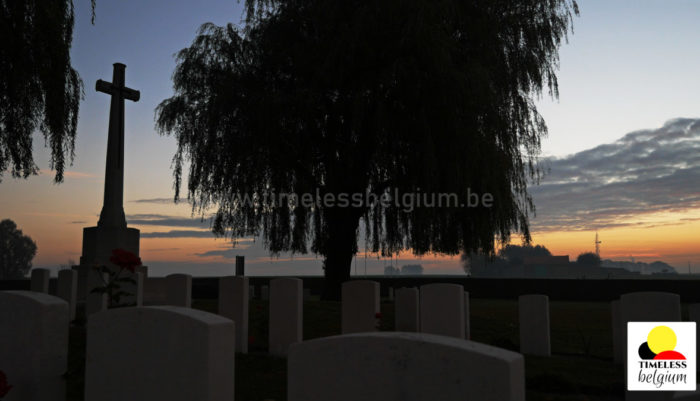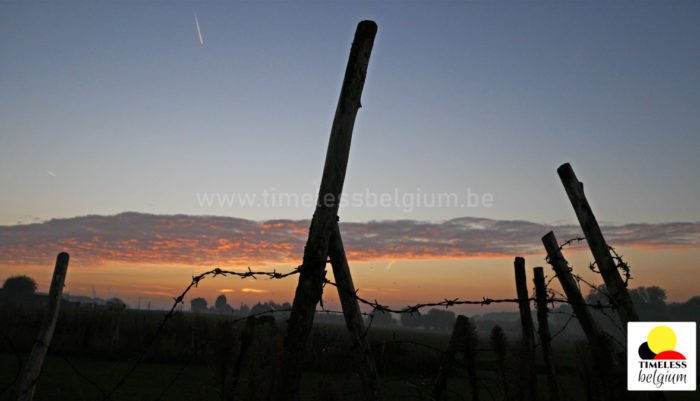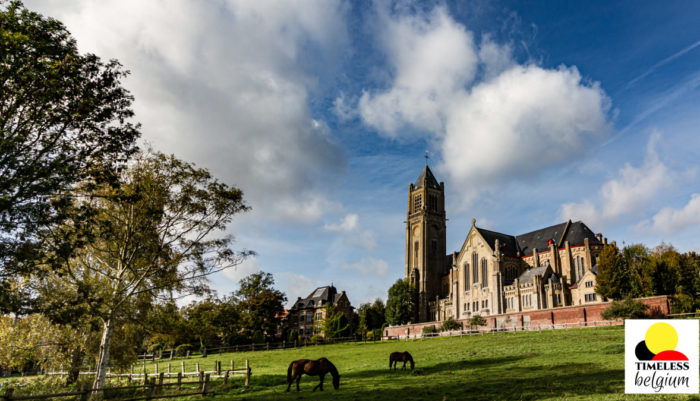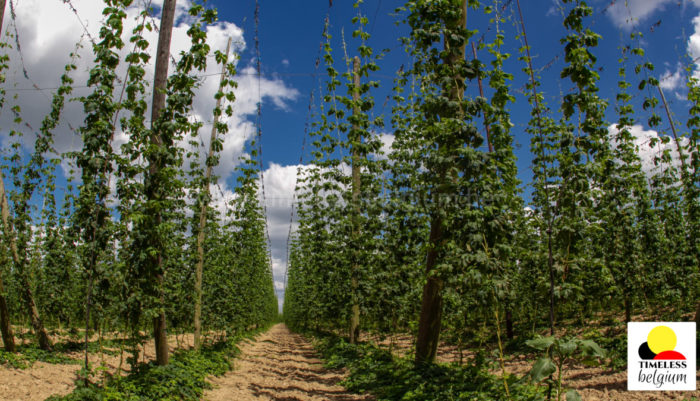Autumn morning over the meadows and Ploegsteert Wood, video shot with war cemetery and recreated battlefield bunker
(Browse the collection : Hainaut Province stock footage videos, time lapses and cinematic shots)
Ploegsteert village is located to the south-west of the wood, and there are cemeteries and other sites of interest on all sides of, as well as within, the wood. There were no major set-piece battles in this area, and Ploegsteert remained in British possession during the major part of the War. Only in 1918 did the Germans take it briefly.
There are more than a dozen cemeteries and memorials in and around Plugstreet – two of them especially significant – and many are named after places in London and the Home Counties.
South of the city of Ypres in Belgium, a large area of woodland was swallowed up in the fighting of 1914. For the next four years, the British and Commonwealth forces held the line in and around Ploegsteert Wood – “Plugstreet Wood” to the British Tommy.
The Plugstreet Project is an international collaboration, led by No Man’s Land – The European Group for Great War Archaeology. The Team aim to explore the rich Great War Heritage of the Western Front between Ypres and Armentieres, a nine mile stretch of front line which bore witness to the June 1917 Battle of Messines. The attack was the first all arms battle in history and the first substantial Allied victory.
There were no major battles fought here, although the Battle of Messines will loom large in our narrative throughout, and the wood itself remained in British hands for much of the war, but every day, week after week, month after month, year after year, men from both sides fought and died in the trenches and dressing stations within and surrounding the wood.
This is Ploegsteert Wood, Belgium. In May 1917 the 38th Australian Infantry Battalion was based in the wood and, according to battalion historian Private Eric Fairey, it was an idyllic spot—it was spring; the sun glinted down through the leaves of the pink chestnuts and copper beeches; the grass was covered with daisies, primroses and buttercups; and the air was filled with the melody of birdsong.
It is one of the smaller of the 23 000 cemeteries maintained by the Commonwealth War Graves Commission, with just 85 graves (two unidentified) dating from the outbreak of the Battle of Messines in 1917. It’s too small to have an altar of sacrifice. All but one British grave are Australians and New Zealanders.
The large wood north of the village of Ploegsteert was named “Plugstreet Wood” by the British soldiers serving there. It has become one of the well-known place names in British military history.
Later that month, Roland wrote to Vera and described a discovery he’d made while walking in Ploegsteert Wood (known to the Tommies as “Plug Street Wood”). Roland had found “the body of a dead British soldier hidden in the undergrowth a few yards from the path. He must have been shot there during the wood-fighting in the early part of the War.
File names, codec and sizes | ||
plug181021_005_fhd | plug181021_005_uhd | plug181021_005_web |
Mov Motion JPEG | Mov Motion JPEG | H264 Mp4 |
397 Mo | 1,82 Go | 12,1 Mo |

 My Account
My Account 



